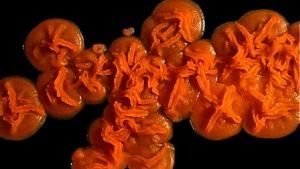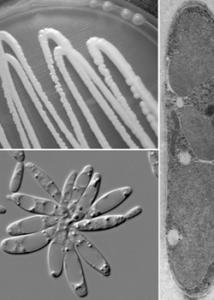Discovering yeast in Hawaiʻi could answer larger questions
University of Hawaiʻi at MānoaProfessor, Pacific Biosciences Research Center, School of Ocean and Earth Science and Technology
Marcie Grabowski, (808) 956-3151
Outreach specialist, School of Ocean and Earth Science and Technology
It is estimated that scientists have discovered only 1% of the yeast species thought to exist on Earth. A professor in the University of Hawaiʻi at Mānoa School of Ocean and Earth Science and Technology (SOEST), hopes to change this—by shedding light on what is known as a “dark area” of the fungal tree of life using a $1 million award over the next four years, funded by the National Science Foundation.
Yeasts impact human health and food safety, play critical roles in ecosystems. Some of these produce high-value oils and pigments which are a key element in certain pharmaceuticals, cosmetics and food additives.
Professor Anthony Amend along with a team of researchers and graduate students will partner with a diverse collection of entities. They include the Honolulu Zoo, Hiʻipaka LLC at the Waimea Botanical Garden, and Oʻahu Army Natural Resource Program to collect yeasts from plants, soils, streams and animals on Oʻahu.
“Because we know so little about yeast diversity and their distributions, it’s difficult to understand the evolutionary history of the larger fungal tree of life, including mushrooms, medicines, and plant symbionts upon which human livelihoods rely,” said Amend. “This project will make it so much easier to identify pathogens, and will help us to understand the cryptic biological diversity comprising microbiomes that reside inside plants and animals.”
This project stems directly from previous work sampling the Waimea watershed to understand how microbiomes are connected by foodwebs at large scales. Preliminary analysis from the Waimea samples showed that Hawaiʻi contains yeast diversity equal to about half of all yeast species described worldwide.
“Had it not been for the sustained collaborations of botanists, stream ecologists, marine biologists, and soil scientists working together to understand microbiomes, we’d never have this type of holistic picture of Hawaiian diversity,” said Amend. “This is also a testament to our culture in Hawaiʻi and at UH Mānoa of sharing data and working towards a common purpose. This contributes to the growing reputation of UH Mānoa as a leader in environmental microbiome research.”
Identifying novel yeast species
Amend anticipates identifying potentially hundreds of novel yeast species. These new insights into yeast diversity will be used to predict global species diversity, host and habitat specificity and diversity hotspots. They plan to work with Hawaiian cultural practitioner Sam Gon to give every new species an ʻōlelo Hawaiʻi-Latin name.
“Lots of studies suggest that Hawaiian biodiversity is uniquely endemic,” said Amend. “I’m excited to see whether that extends to Hawaiian microbes like fungi. Additionally, we’ve already shown that these yeasts are important for Hawaiian conservation and even plastic degradation, so this biodiversity discovery work might be the first step in breakthrough technology.”


